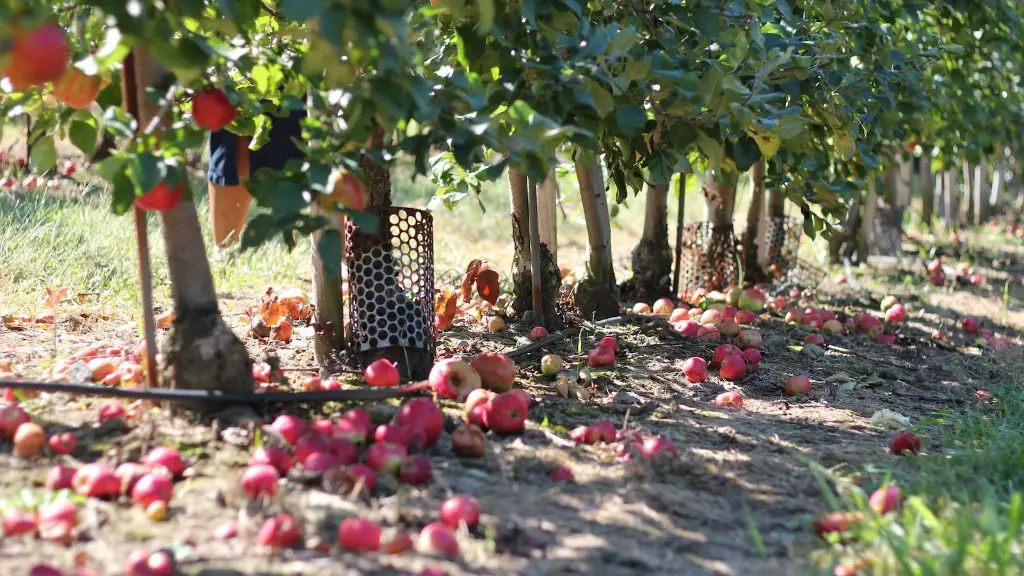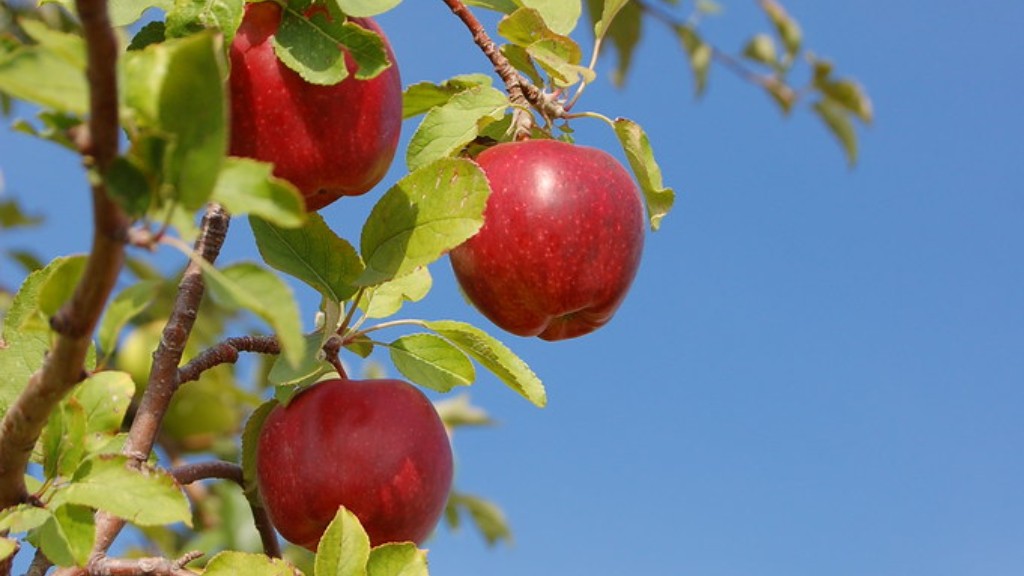Contrary to expectations, an apple tree may not bloom every year, even if it is healthy. The reasons for this vary, ranging from climatic issues to a lack of pollination. In this post, I’ll discuss why an apple tree may not bloom and how you can encourage your apple tree to bloom.
Firstly, the climate plays a major role in the failure of some apple trees to bloom. Dry spells and too much heat can impede the growth of flowers on apple trees. If the temperature does not remain within the optimal range for pollination, it is likely that the flowers won’t open.
Another reason why your apple tree may not have bloomed this year is a lack of bee activity during flowering. Apple trees need other insects to pollinate and bees are the main pollinators of apple trees. If there are not enough bees around, the flowers may not be pollinated.
Furthermore, a lack of essential nutrients and water could be a contributing cause of your apple tree not blooming. Apple trees need ample amounts of nitrogen, phosphorus and potassium and other essential micro-nutrients in order to bloom. A lack of these essential nutrients will prevent the healthy growth of flowers.
Lastly, if the apple tree is young, it may not be ready to bloom yet. Apple trees typically take 3 to 5 years after planting to start bearing fruits and blooming. If the tree is too young, it may not be mature enough to flower.
What are some ways to encourage my apple tree to bloom?
There are several steps that you can take to encourage your apple tree to bloom, starting with pest control. Ensuring that your apple tree is free from pests such as aphids, scale and mites is important for flowering. These pests feed on the sap of the tree and prevent it from growing strong enough to bloom.
It is also important to ensure that your apple tree receives adequate soil nutrition. Adding compost and manure to your apple tree’s soil can helps enrich it with essential nutrients. You should also practice mulching and keep the area around the apple tree weed-free, as weeds rob the soil of essential nutrients and water.
In addition to this, you should also provide adequate water to the apple tree. During periods of drought, the apple tree should be watered at least once a week. However, it is important to check the soil regularly to ensure that the water is not being over-applied.
Lastly, if your apple tree is not blooming because of a lack of pollinators, you should provide alternative ways for pollination. Hand-pollination can be done using a paintbrush or cotton swab, although this method should be used sparingly and only when necessary.
What are the benefits of having an apple tree that blooms?
Having apple trees that bloom offers several benefits, the primary one being that it allows apple trees to bear fruit. Pollination is a key requirement for fruit production in apple trees, and without flowers, the tree will not be able to produce fruit.
Furthermore, when the apple tree blooms, it adds to the aesthetics of your garden. Bright white or pink flowers are an attractive addition to any garden, and the presence of these flowers can attract birds, bees and other beneficial insects.
The apple tree’s blossoms also provide a valuable source of nectar and pollen for bees and other pollinators. By providing a vital source of food for these pollinators, it helps maintain the natural balance between plants and the environment.
Lastly, flowering apple trees also signal the start of the fruiting season. Not only does this signal the start of harvesting, it also encourages the growth of new foliage and strong branches.
What is the best time of year for an apple tree to bloom?
The ideal time for apple trees to bloom depends on the climate and the region in which they are located. Generally, apple trees tend to bloom in late spring or early summer, usually in late May or June. This is when the days are longer and the temperature is warm enough to support pollination.
Some apple trees may also bloom in autumn, although this is not as common or as reliable a source of pollination. In colder climates, apple trees can also bloom as late as June or July.
When choosing an apple tree for your garden, it is important to consider when it flowers. Different varieties of apples will flower slightly differently depending upon their genetic makeup, so you may need to take this into account.
In addition to this, you should also pay attention to the soil type and climate conditions in your area. These factors can affect when the tree blooms, so it is best to research what conditions are best suited for your particular apple tree variety.
What are the signs of an apple tree not blooming correctly?
If your apple tree is not blooming correctly, it is likely that you will see some signs of this. Apple trees that do not bloom correctly often display yellowish-greenish leaves and foliage. The tree may also have fewer leaves and shoots than usual, as the lack of pollination affects its growth.
The apple tree may also display weak or sparse flowers. These flowers may be small and whitish-green in colour and usually wilt or shrivel very quickly. This is an indication of inadequate pollination, which causes the flowers to not open fully.
Another sign of your apple tree not blooming as it should is decreased yields. If the apple tree has difficulty in blooming, it is likely that fewer flowers will be produced, causing the yields to be lower than expected.
Lastly, weak or stunted branches are another indication of a tree not blooming correctly. If your apple tree is not growing as it should, it could be a sign of pollination issues.
What are the potential risks of an apple tree not blooming?
An apple tree not blooming can lead to several risks, the main one being a decrease in overall production and yields. As pollination is needed for fruit production, a lack of pollination can lead to fewer fruits being produced, or lower-quality fruits.
A lack of pollination can also affect the overall growth of the apple tree. If the apple tree is not producing sufficient amounts of fruit, it may be a sign that it is not receiving enough nutrients or water, and this can lead to the tree becoming stunted and weak.
Furthermore, an apple tree not blooming can lead to pest infestations. Without adequate pollination, the apple tree is more vulnerable to pests such as aphids, scale and mites, which can damage the tree’s leaves, flowers and fruits.
Lastly, it is important to note that a lack of pollination can affect the fruits of the apple tree. Without enough pollination, the fruits may be smaller, misshapen and of inferior quality.



